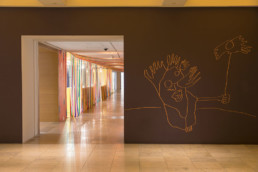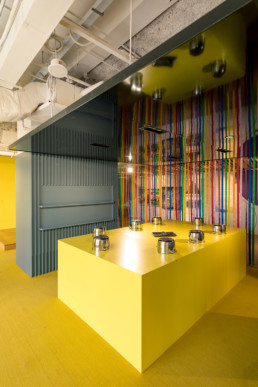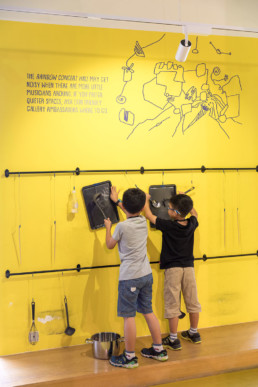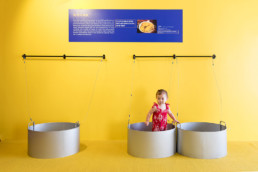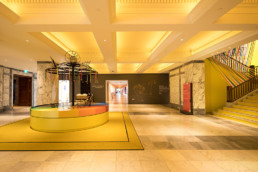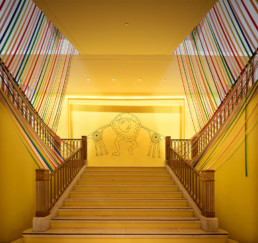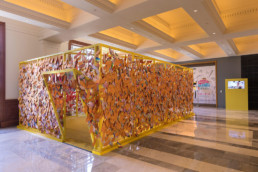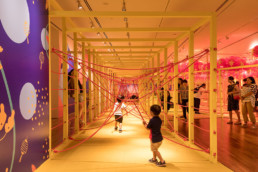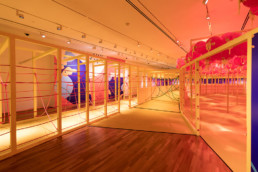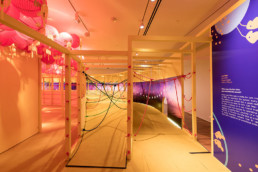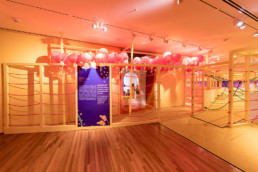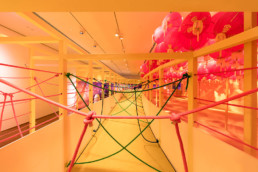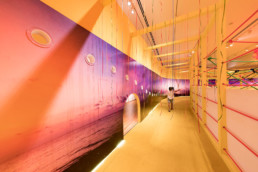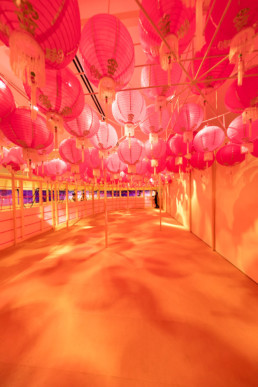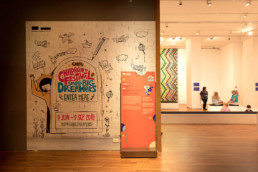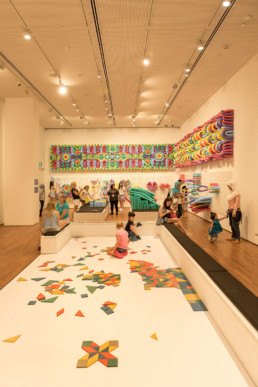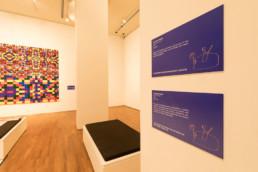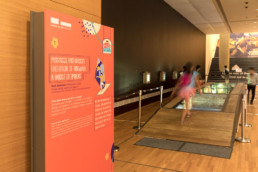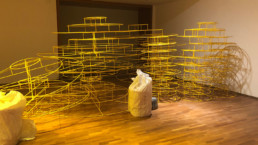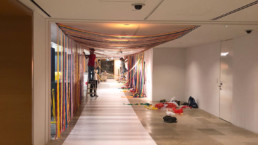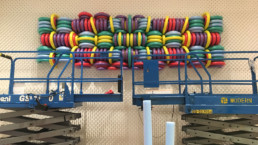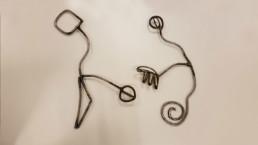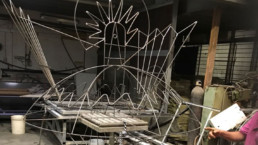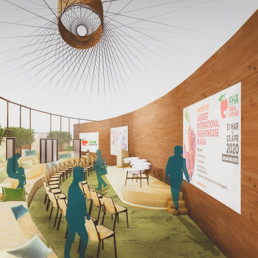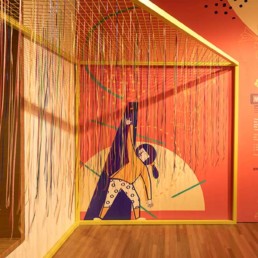Type
Exhibition & Graphic Design
Location
National Gallery Singapore
Area
1,700 sqm
Programme
Temporary exhibition
Client
National Gallery Singapore
Timeline
02/2018 – 06/2018
Contractor
SPACElogic
Photographer’s Credit
Frank Pinckers
Discover art through body movement
Dreams can take you to wondrous places. They motivate you to find and express yourself, and give you the courage to become greater. The exhibition is inspired by a Singaporean artist Lee Wen whose story exemplifies the power of the mind and art to create infinite possibilities. Interactive installations and activities unveil different forms of movement using object, materials, shapes, colours and patterns.
The inaugural Gallery Children’s Festival invites you to embark on a journey of self-discovery through a wondrous world of art. Explore a series of installations inspired by the life and work of Singaporean artist Lee Wen, alongside immersive and participatory works by Mark Justiniani (Philippines), teamLab (Japan) and We Make Carpets (The Netherlands). Discover art through body movement as you navigate obstacles, compose melodies, scribble your hopes and fears on wings, and follow the path of the sun.
With consideration that Lee’s ideas may be too abstract for the younger audience or audiences who have yet to be acquainted with his work, we identified key themes of Lee’s work that the public recognizes his work for through colour, movement and the portrayal of a journey.
Employing movement as the clue for individuals to navigate their way across the spaces, work and rework around the parameters of the installation, and understand the value of coordinated action was the key considerations in the exhibition design process.
In order to achieve an experience that would engage each senses of the body, physicalizing and clustering the experiences using colours, tones, daily objects, creating sounds, shaking, hanging flying papers, walking, crossing and posing take leading components in the make-up of the installations.
Design approaches of a space had to adjust according to the way our younger audience perceive a physical space. Pathways were narrower, layer of information had to be presented for both our small and big dreamers.
